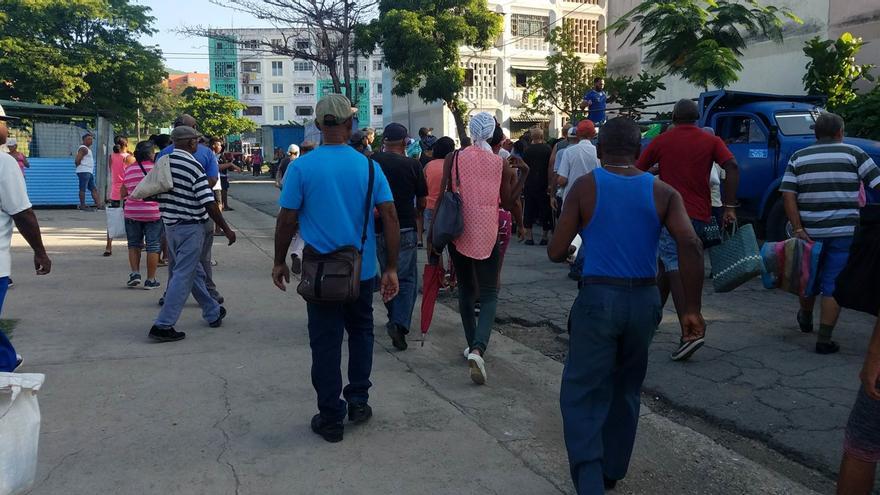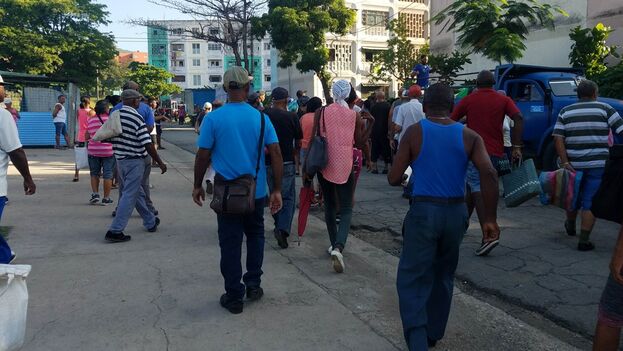
14ymedio, Santiago de Cuba, 14 October 2023 — It’s early morning, and Yésica puts on her most comfortable clothes and shoes. Together with her two children, she tries to be among the first to buy ’burro bananas’ (fongo, in the east of the country) and yucca at the agricultural fair that takes place every Saturday in the Micro 9 neighborhood, in the José Martí District of Santiago de Cuba. She anxiously waits for the truck to arrive with the products so “the bananas don’t turn black during the week,” but her plan is one thing, and the result could be another.
“People run after the truck, willing to be dragged. If they don’t die of hunger they can die by being crushed,” complains Yésica. To reach the vehicle, still running, position yourself and be among the first customers, “you have to be ninjas,” she says, although in her case, as in that of so many others who come to the fair, “the instinct for survival is stronger than the fear.”
Organized by the city authorities, the fair is not peaceful, and the police often intervene, as happened this Saturday. The relatively low price of food, cheaper than in the private shops, causes an unstoppable flood of people. Both a pound of fongo and one of cassava costs 15 pesos, in contrast to the 80 that they ask for in the private shops. Both products have become the salvation of many homes in the area.
That food is essential to occupy the space that cannot be filled by the scarce five pounds of rice that are distributed through the ration book. That amount is barely enough for a few d


